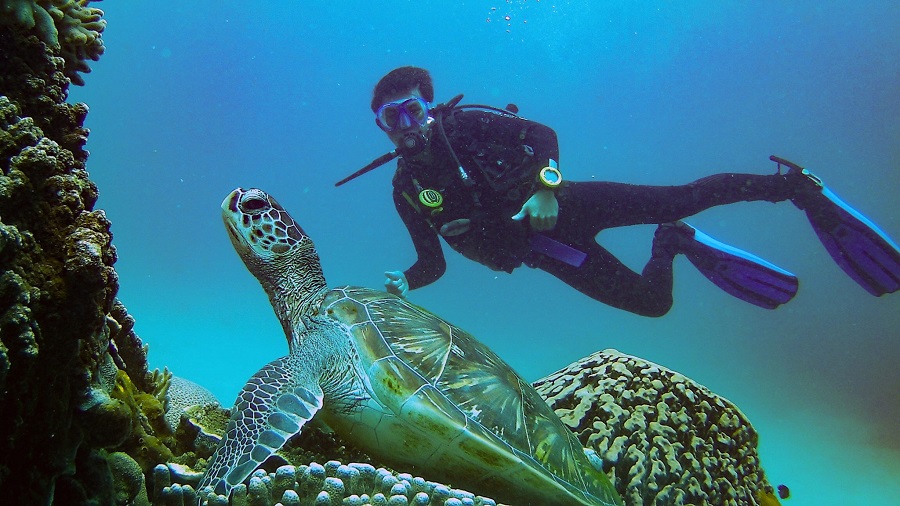A Comprehensive Guide to Diving In Komodo Island

When you are talking about dive destinations or Diving Picks all over the world, Indonesia is at the very top. Komodo Island located in the Indonesian archipelago, is recognized as one of the top areas in the country to go for a dive and experience the beautiful underwater marine life.
The composition of marine life is unreal, spanning from fish of all colors and sizes to the ever-impressive coral reefs. The key highlight of the islands however, is the manta rays that glide around the shallow waters and more importantly, the Komodo dragon; a creature exclusive to this island.
Komodo Island is famous for the big creatures found there, but the marine life in the park is not to be underestimated at all. In this guide, we will discuss best time of the year to go diving, necessities to go diving among others.
Best Time of the Year to Dive in Komodo
Komodo Island experiences a wet and dry season. You can dive all year round, and it all comes down to personal preference with regards to weather conditions. The last quarter of the year, is considered a good time to go diving as many creatures are present and the weather is good.
Diving In the Wet Season
The wet season runs from late December until March. The months of January and February have a lot of rain. Thus, it is not ideal for diving in Komodo during this period. However, the wet season spanning from December to February is the best time to spot manta rays.
Diving In the Dry Season
The dry season runs from April until November, and this is considered the best time to go diving. The period spanning from May to September is rated as having ideal conditions for diving.
Necessities for Diving in Komodo Island
Qualification & Experience
There are many diving sites in Komodo Island, and they all have varying experience requirements. This is dependent on the depth of water and the currents; either high or low.
It is possible to go diving with an open water qualification; not exceeding a depth of 18 meters, and see beautiful marine life. Dive instructors are charged with the responsibility of placing you in a suitable dive group, and taking you to dive sites ideal for your experience level.
Dive Insurance
While on a diving trip, accidents can happen, but this should not dampen your spirit. Accidents like drowning, allergic reactions to stings among others do occur. It is, therefore, crucial to be prepared for any occurrence and get insurance.
These are very remote areas, and getting medical assistance can prove challenging. The insurance covers most activities on the diving trip. Accessing a cover is as simple as going online and getting a quote from a broker, and you are all set to go.
Liveaboard Diving In Komodo
The Komodo National Park is located within the Lesser Sunda Islands that includes Komodo, Rinca, and Padar, among others. The sites in the park are evenly spread out, making it ideal for covering them by liveaboard cruising.
During the day you can go diving by liveaboard. It is crucial to note that liveaboard is the more comfortable and luxurious diving option in comparison to diving from the shore. The former is more expensive, ranging from 200 dollars and the latter will only cost you about 100 dollars. The liveaboard option however, is an experience of a lifetime.
Reasons to Go Diving From Liveaboard Cruises
- You will arrive at the dive site first while others hassle to take small boats that are slow and uncomfortable to ride in.
- Liveaboard cruises enable you to dive at night which is awesome.
- Living on a big boat while on a cruise and waking up to dive is an experience to behold for a lifetime.
Conclusion
To sum it all up, Komodo Island is an excellent getaway destination to go diving. Most if not all tourists traveling there give it a thumbs up, meaning you are most likely to be impressed by this destination.